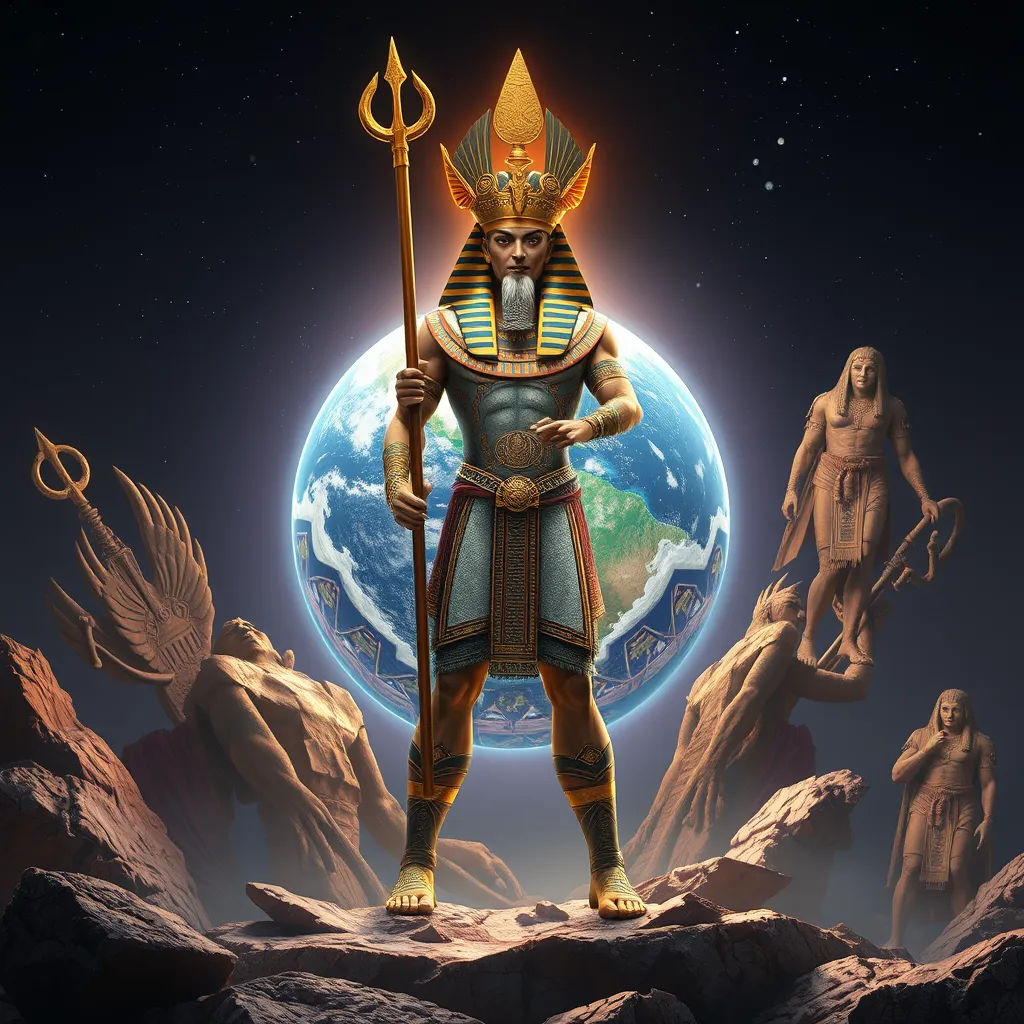Geb: The God of the Earth, His Role in Creating the World and Providing for Mankind
I. Introduction
In ancient Egyptian mythology, Geb holds a significant place as the god of the earth. His role encompasses not only the physical embodiment of the ground beneath our feet but also the vital contributions he made to the creation of the world and the sustenance of mankind. Earth gods, such as Geb, are essential in various cultures, often embodying themes of fertility, stability, and nourishment. This article explores Geb’s origins, his mythological significance, and the lasting impact of his worship in both ancient and modern contexts.
II. Geb’s Origins and Mythological Background
Geb is part of the ancient Egyptian creation myth, often depicted as the son of the sky goddess Nut and the air god Shu. His lineage places him in a prominent position among the gods of the Ennead of Heliopolis, a group of nine deities central to the Egyptian pantheon. Geb’s siblings include Nut, the sky; Shu, the air; and several other important gods, making his family tree a rich tapestry of divine relationships.
Geb’s relationship with Nut is particularly crucial, as their union represents the earth and sky coming together, an essential theme in Egyptian cosmology. The separation of Geb and Nut by their father, Shu, is a key mythological event that illustrates the creation of the world and the balance between the earth and the heavens.
III. Geb as the Earth God
Geb is symbolically rich, often represented as a man lying on the ground with green vegetation sprouting from his body, embodying fertility and life. His skin color is typically depicted as green or black, symbolizing the rich soil of the Nile that sustained agriculture and life in ancient Egypt. As the earth god, Geb was associated with the following attributes:
- Fertility
- Stability
- Life-giving properties of the earth
In art and literature, Geb is frequently depicted in scenes of creation and agriculture, showcasing his integral role in the sustenance of life. His titles include “Lord of the Earth” and “The Great Green,” emphasizing his dominion over nature and the physical realm.
IV. Creation Myths Involving Geb
Numerous myths highlight Geb’s role in the creation of the world. One prominent story involves the separation of Geb and Nut, where Shu, the god of air, pushes them apart, allowing space for the world to exist. This separation is not just physical but also metaphorical, representing the balance of the cosmos.
Another myth illustrates Geb’s contributions to mankind. It is said that he provided fertile land for agriculture and that the grains and crops that grew from him were gifts to humanity. Such tales underscore his importance in ensuring the survival and prosperity of the ancient Egyptians.
V. Geb’s Influence on Agriculture and Fertility
Geb’s connection to the fertility of the land is paramount. He was revered as a source of agricultural bounty, and the ancient Egyptians believed that their farming success was directly tied to his favor. Rituals and practices honoring Geb included:
- Offerings of the first fruits of the harvest
- Festivals celebrating the planting and harvest seasons
- Prayers for rain and good growing conditions
These rituals were vital for ensuring bountiful harvests, reflecting the deep connection between the land and the divine. Geb’s presence was invoked in agricultural endeavors, with farmers seeking his blessings for a prosperous yield.
VI. Geb in Ancient Egyptian Religion and Worship
Temples and sacred sites dedicated to Geb were scattered throughout ancient Egypt, where worshippers came to pay homage. The most notable temple was located in the city of Heliopolis, a center of worship for the Ennead. Rituals and offerings made in Geb’s honor often included:
- Sacrifices of livestock
- Offerings of grain and produce
- Ceremonial prayers and hymns
Priests and priestesses played a key role in serving Geb, conducting rituals that honored him and sought his blessings for the land and its people. Their involvement ensured that the connection between the divine and the earthly realm was maintained, reinforcing Geb’s importance in the religious practices of ancient Egyptians.
VII. Geb’s Legacy in Modern Culture
Geb’s influence extends beyond ancient Egypt, finding a place in contemporary literature and media. He is often referenced in stories that explore themes of nature, fertility, and the balance of the earth. The resurgence of interest in ancient Egyptian mythology has also led to new interpretations and representations of Geb in various forms of art and literature.
In modern spiritual practices, Geb is sometimes invoked in rituals aimed at connecting with nature and promoting agricultural sustainability. His legacy serves as a reminder of the importance of respecting the earth and its resources, echoing the teachings of ancient Egyptian culture.
VIII. Conclusion
In summary, Geb is a pivotal figure in ancient Egyptian mythology, representing the earth’s vital role in creation and sustenance. His contributions to agriculture and fertility highlight the significance of the land to the ancient Egyptians, while his worship reflects a deep connection to the divine. As we explore Geb’s teachings and stories, we find relevant lessons for modern society, particularly in our relationship with nature and the importance of sustainability. Further exploration of ancient Egyptian mythology reveals a wealth of knowledge that can inspire and inform our contemporary lives.




